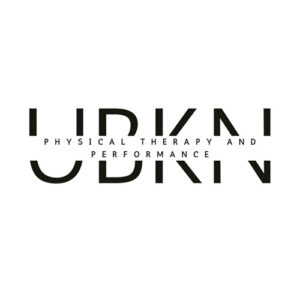Malro FAQs
Intestinal malrotation is a rare digestive abnormality that occurs during gestation resulting in the intestines coiling into the wrong anatomical position. This means that a portion of the intestines are in the wrong anatomical location within the patient. Some patients live for years without symptoms and then experience a traumatic event, while others are diagnosed shortly after birth. Its presentation varies by patient.
Intestinal malrotation symptoms can vary for everyone. However, the cardinal symptoms often include abdominal pain and distension, green or yellow vomit/spit-up, slow motility, constipation, failure to thrive, cramping, and fever. In cases where a volvulus is present, symptoms of sepsis may also appear. Intestinal malrotation symptoms can indicate danger, so if you have cause for concern it’s important to consult with a medical professional immediately.
An upper GI (gastrointestinal series) series with small bowel follow-through, CT, and MRI are all imaging tests that can show the presence of malrotation of the intestines.
An upper GI series is currently considered the gold standard for a diagnosis of malrotation of the intestines.
Intestinal malrotation refers to the actual birth defect that occurs while the baby is developing in the womb. A volvulus can be caused by malrotation when the small or large bowel twists and reduces or cuts off blood supply to the rest of the bowel.
Intestinal malrotation can feel different for every single person whether they experience the typical intestinal malrotation symptoms of an unbalanced digestive system or an active volvulus. Red-flag intestinal malrotation symptoms include frequent vomiting, green/yellow bile or vomit, a swollen, firm abdomen, pallor, and extreme abdominal pain (in infants this may demonstrate as curled legs).
Yes. Malrotation of the intestines is the diagnosis used to describe an anatomical abnormality. It refers to the anatomically incorrect positioning of the intestines. This alone can cause painful symptoms and side effects. However, when the bowel twists on itself, this is defined separately as a volvulus. In short, a volvulus is a medical emergency that people with intestinal malrotation have a higher risk of developing.
Malrotation is thought to affect one in 500 births, with one out of 6,000 live births becoming symptomatic.
Yes, while intestinal malrotation is often considered a pediatric disease by medical professionals, many adults don’t find out about the presence of the birth defect until later in life following a series of misdiagnoses. In addition, intestinal malrotation is a lifelong condition, so even patients diagnosed during childhood can deal with symptoms as adults. Therefore, strengthening the call for a more uniform standard of care for intestinal malrotation patients.
Currently, there are two known surgical procedures for intestinal malrotation: The Ladds Procedure and the Gut Malrotation Correction Surgery (Kareem Procedure).
The Ladds Procedure divides the peritoneal bands (Ladds bands) that cross across the abdomen to reduce the occurrence rate of volvulus. Most surgeons also choose to perform an appendectomy as part of the Ladds Procedure.
Gut malrotation correction surgery differs from the Ladds Procedure because its cornerstone is repositioning the bowel so that it is in normal rotation. The intestinal malrotation surgical procedure involves duodenopexy, formation of neo-Trietz, and fixation of the cecum, ascending colon, and the mesenteric root.
While many physicians will refer to the Ladds Procedure as a fix for intestinal malrotation, it was created to treat acute cases of volvulus. To that end, the Ladds procedure decreases the risk of volvulus, but it does not return the intestines to their correct anatomical position. Therefore, a patient may still experience symptoms of intestinal malrotation following surgery. Patients report varying levels of symptoms following the Ladds Procedure, and scientists have not yet figured out why some children and adults do well after the procedure and some do not. It is always best to talk to your physician about your specific situation when making medical decisions about intestinal malrotation treatment.
Everyone recovers differently from intestinal malrotation surgery. The procedure and age play the largest role in recovery time. In the same way, younger children often benefit most from intestinal malrotation treatment, younger children often face a shorter timeframe for intestinal malrotation surgery recovery.
Ladds Procedure: On average, patients spend 5-7 days inpatient, but various factors can determine hospitalization length. Patients who undergo the laparoscopic version of the surgery may have a shorter hospital stay. Before discharge, a patient’s bowel must wake up, and this timeframe varies from patient to patient. Emergency procedures involving a volvulus may require more post-operative treatment. Complications can also extend a stay.
Gut Malrotation Correction Surgery (Kareem Procedure): Most patients also spend 5-7 days inpatient, but once again, various factors can determine hospitalization length. Before discharge, a patient’s bowel must wake up and they must be able to pass gas, pass stool, and consume an adequate diet.
Following discharge for both of these surgical operations, patients should expect activity restrictions and weight-lifting limits until released by their surgeons.
Many (but not all) patients with intestinal malrotation also present with motility issues. Motility refers to the speed at which food travels through the digestive system. While there is no direct link between the two, the conditions are often co-morbid in patients.
Children often have an easier time accessing the Ladds Procedure than adults. Many pediatric surgeons are trained to perform the Ladds Procedure whereas an adult surgeon may never see a case within their lifetime. While there is not a designated intestinal malrotation clinic, many adult patients opt for the Ladds Procedure with the guidance of a pediatric surgeon or gut malrotation correction surgery.
Historically the intestinal malrotation community has been underserved and understudied. We are hoping to change that. The Malro Fighters Foundation is happy to support and disseminate information from any legitimate medical or research center about intestinal malrotation.
Patients repeatedly state the number one thing they wish physicians had told them is, “You are fixed.” Many people diagnosed with malrotation of the intestines continue to experience symptoms long after intestinal malrotation treatment and intestinal malrotation surgery recovery. Common chronic symptoms include reduced motility, GERD (gastroesophageal reflux disease), constipation, diarrhea, and SIBO. These symptoms can be found in children and cases of intestinal malrotation in adults; bloating is also commonly reported in all age groups.







